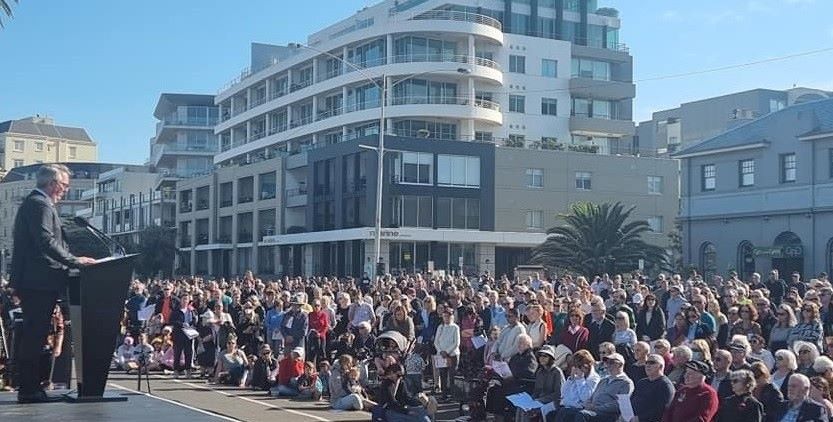John Bichard Grut: The Brothers Grut: part 3
John Bichard Grut
 John was the youngest of three surviving boys who were born to Peter Grut and his wife Elizabeth Mary née Bichard. He was born in Sandridge in 1861. John became a successful architect, builder and was prominent in many sporting clubs in Port Melbourne and South Melbourne.
John was the youngest of three surviving boys who were born to Peter Grut and his wife Elizabeth Mary née Bichard. He was born in Sandridge in 1861. John became a successful architect, builder and was prominent in many sporting clubs in Port Melbourne and South Melbourne.
He was also involved in the arts through his membership of the Athenaeum Committee and supported members of his local community in many ways, including those who volunteered for service in the Boer, First and Second World Wars. His community service extended to the St John’s Ambulance organisation where he promoted what was an early program of occupational health and safety in the workplace.
John had shown a talent for art early in his life, when at age fourteen, he was awarded a prize for a landscape he had done when attending the South Melbourne School of Design. He also became involved in the Sandridge community early in his life and was a member of the Mutual Help Lodge in 1878 at seventeen.
Just four years later, in 1882, John began advertising in the Melbourne and local newspapers for the building work he was engaged in. By 1883 John was quite busy with the construction of three wood and brick cottages in Sandridge. This was the same year that allotments in Ross Street were offered for sale. A newspaper advertisement in 1919 stated that the cottages in Ross Street, offered for sale at that time, had been built by John Grut, architect. In another advertisement John was noted for “[h]is prominent part in the building of a considerable portion of Port Melbourne”.1 By 1884 John had completed his qualifications as an architect and was advertising under this title. His work extended to numerous hotels in Port Melbourne as well as houses. John was involved in building work with the Chequer’s Inn (Bay and Bridge), Lord Raglan, Rising Sun, Hibernian, Exchange and the Cosmopolitan hotels. He was also engaged in 1911 to rebuild the Court House Hotel in Bacchus Marsh, as “[a]n Edwardian, two-storey brick corner hotel with some Old English characteristics”.2

The depression of the latter part of the 19th Century caused a slump in John’s workload. The few advertisements he placed in the newspapers around this time were considerably subdued compared to those that he had placed during the housing boom. In the late 1890s John extended his work to the sewerage systems of Port and South Melbourne. Following the turn of the century his work picked up, and his advertisements gradually became more prominent.
John also took time out to travel and went overseas on several occasions. In February 1892 he went to Britain, meeting up with his brother Peter, who was also overseas at the time. They returned together in October 1892. He visited Japan in 1902, and went once again to Britain and Europe in 1904. In 1911 he gave a lantern slide presentation entitled ‘Venice’, which he had visited whilst overseas.
John’s involvement in sport, especially bowls, was an extremely important part of his life both in playing and administration. He bowled for Port Melbourne and South Melbourne, and became president of the Victorian Bowling Association (VBA) which granted him life membership for his work in 1943.
The numerous articles about John Bichard Grut prominently attend to his compassion for others throughout his life. John died on 26 August 1950 aged 89 and was buried in the Cheltenham Cemetery. He remained a bachelor. Sadly, the Age misspelled his name as ‘Bischard’ in the obituary it published.
Ray Jelley
April 2018
1 “Sandridge Reminiscences,” Port Melbourne Standard, February 22, 1919, p. 2.
2 “Hotel (Court House Hotel),” Victorian Heritage Database Report, June 1, 1995

